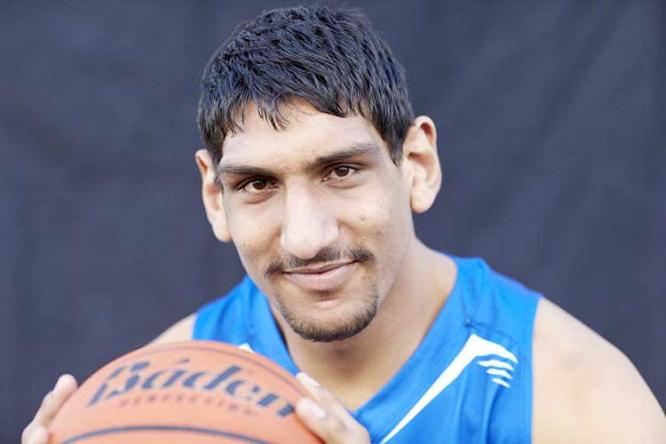In a country with a teeming population of over a billion
people, not every Indian has an opportunity to make it big in the country of
his birth. Millions of patriots flock to greener pastures in search of sunrise,
and return home to find things still moving at the pace of a bullock cart.
There is hope though. There is always hope as long as the
young Indian grazes on perseverance and determination. One such Indian giant by the name of Satnam
Singh Bhamara did exactly that. He made it big - in America - by becoming the first Indian-born basketball player to be picked in the NBA draft (by the Dallas Mavericks).
Unlike Sim Bhullar - who is a Canadian of Indian-origin;
Satnam is FBI (Full Blooded Indian). With cows for company, he honed his
basketballing talents in the hitherto obscure town of Balloke in Punjab; and
now, five years later, he has a one-way ticket to Dallas.
A little more than 170 km away from Balloke lies the town of
Khanpura, the ancestral village of a man whose parents who had a one-way ticket
to America, and never looked back; a man who's running for the most powerful
job in the world - The President of the United States of America.
No prizes for guessing who the subject in question is -
Bobby Jindal! The real question is: Who is he?
 As Shashi Tharoor puts it, in an immigrant nation of
atavists and assimilationists, he is the latter's
dream; except that he takes his extreme belief an extra country mile.
As Shashi Tharoor puts it, in an immigrant nation of
atavists and assimilationists, he is the latter's
dream; except that he takes his extreme belief an extra country mile.
In 2008, a 36-year old Bobby (née Piyush) Jindal achieved no
mean feat when he became the first US Governor of Indian origin. He had broken
the glass ceiling of American politics by occupying the highest office in
Louisiana despite the brown colour of his skin.
India too revelled in the victory of their greatest export
to the American political arena. But is it to India's credit that Jindal has
achieved the success that he has? He doesn't believe so in the least.
Bobby Jindal hates, nay despises any association with all
things Indian. The hyphen is his least favourite punctuation mark, the mirror
his most disliked object- he loathes being called an Indian-American; he hates
the colour of his skin and his Hindu past. He is among the most conservative of
the conservative Republican Party, a white interior trapped in a brown
exterior.
It is quite alright to not want to be termed a
hyphenated-American, but to reject the idea with such indignation and disgust
towards the nation of your parents is simply deplorable and disrespectful to
anyone with Indian blood running through their veins.
Never mind that he is the antipode of Indianness, or that he
doesn't like to acknowledge or celebrate his ancestry, one thing is quite
certain: the road is the White House won't be easy. And Bobby Jindal certainly
isn't banking on the support of the over 3 million strong Indian-American
population to be US President.
But Jindal mustn't forget: Indians may be a divided
community; but when they detest someone, their hatred is so fervently profound
that it unites them notwithstanding the colour of their passports.
And remember, when an Indian makes it big in America, the
nation rejoices (ask Satnam). An Indian - who never forgets his roots.
